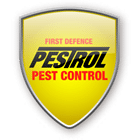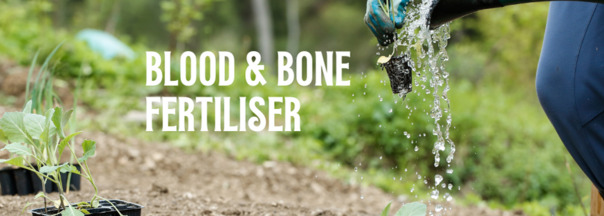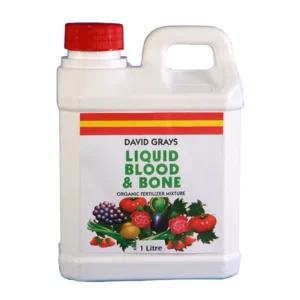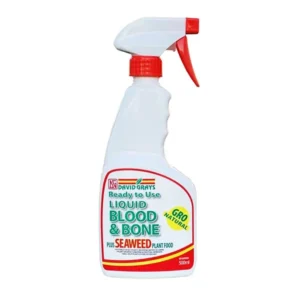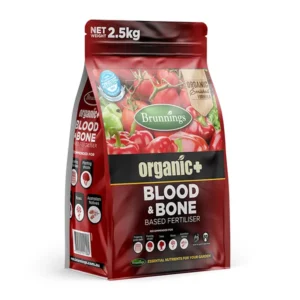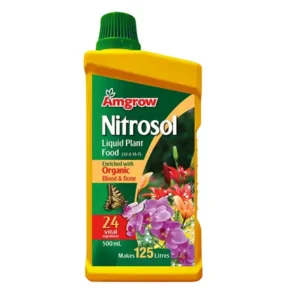In the world of organic gardening, blood and bone fertiliser emerges as a time-tested and trusted choice for enriching soil and promoting robust plant growth. This extensive guide delves deep into the intricacies of blood and bone fertiliser, uncovering its merits, application techniques, potential drawbacks, and much more.
Demystifying Blood and Bone Fertilizer
Blood and bone fertiliser represents an organic, nutrient-rich amendment derived from animal byproducts. It comprises dried and powdered blood sourced from slaughterhouses, bone meal extracted from animal bones, and often other organic components. This unique blend offers a comprehensive source of essential nutrients that plants crave for their optimal growth.
Unravelling the NPK Ratio
The NPK ratio, prominently displayed on blood and bone fertiliser packaging, provides insights into the proportions of vital nutrients: nitrogen (N), phosphorus (P), and potassium (K). A typical blood and bone fertiliser might sport an NPK ratio of 4-6-0, indicating elevated phosphorus content and diminished nitrogen and potassium levels. This unique composition makes it particularly beneficial for fostering sturdy root development and vibrant flowering.
Prominent Brands of Blood and Bone Fertilizer: Exploring Trusted Options
When it comes to blood and bone fertiliser, a plethora of brands cater to the needs of avid gardeners and enthusiasts. These brands have established themselves as reliable sources of high-quality fertilisers, offering products that promise to enhance the vitality and growth of your plants. Let’s take a closer look at some of the prominent names in the field: Brunnings, David Grays, Richgro, and Amgrow.
1. Brunnings:
Brunnings is a well-known name in the gardening industry, recognized for its extensive range of gardening products designed to facilitate healthy plant growth. With a history spanning over a century, Brunnings has built a reputation for producing reliable and effective fertilisers.
2. David Grays:
David Grays is another name synonymous with quality gardening products. With a focus on innovation and customer satisfaction, the brand has earned a place of trust among gardening enthusiasts seeking effective solutions for their plants’ needs.
3. Richgro:
Richgro has a rich history in the gardening industry, having been in operation for over a century. The brand is known for its diverse range of gardening products, from fertilisers to soil conditioners, all designed to help gardeners achieve their desired results.
Blood and Bone Fertilizer: Richgro’s blood and bone fertiliser is a favoured choice for those seeking a reliable and easy-to-use organic fertiliser option. With a focus on providing essential nutrients to plants, Richgro’s blood and bone fertiliser is crafted to support strong root development and overall plant vigour.
4. Amgrow:
Amgrow is a brand that understands the intricate needs of gardens and landscapes. With a comprehensive range of gardening solutions, Amgrow caters to the diverse requirements of plants and the aspirations of gardeners.
Mastering the Art of Blood and Bone Fertilizer Application
-
- Preparation: Wear protective gloves and be cautious about inhaling any dust. Choose a well-ventilated workspace.
- Application: Gently distribute the fertiliser evenly across the soil’s surface.
- Incorporation: Delicately mix the fertiliser into the top layer of soil.
- Watering: Thoroughly water the treated area to activate the gradual release of nutrients.
Versatility Unleashed: Diverse Uses of Blood and Bone Fertilizer
-
- Holistic Soil Enrichment: Blend into the soil before planting or apply as a top dressing to existing plants.
- Elevating Compost: Infuse with compost to elevate its nutritional content.
- Seedlings and Transplants: Administer a diluted solution to nurture robust root establishment.
- Bulbs’ Best Friend: Add to planting holes for a boost in flowering prowess.
Top Tips for Flawless Fertiliser Application
Always read the label for guidance.
As a general rule
-
- Dosage: Typically, employ 1-2 cups per every 10 square feet of garden area.
- Timing: Apply during early spring for an invigorating start and once again in late summer to extend the flowering season.
- Frequency: Restrict applications to 2-3 instances annually to sidestep over-fertilization risks.
Prime Candidates for Blood and Bone Fertilisation
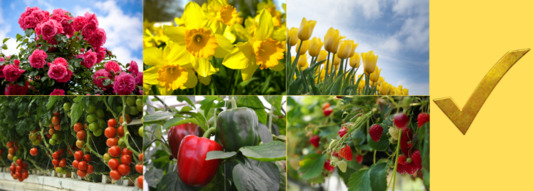
Blood and bone fertiliser works wonders for:
-
- Blossoming wonders like roses, daffodils, and tulips.
- Fruiting delights encompassing tomatoes, peppers, and strawberries.
- Shrubs and trees, contributing to robust root network expansion.
Possible Drawbacks of Blood and Bone Fertilizer and Safety Considerations

While blood and bone fertiliser offers numerous benefits, it’s important to be aware of potential drawbacks and take safety precautions to ensure a successful gardening experience.
1. Odour:
Blood-based fertilisers often emit a distinct and somewhat pungent odour during and shortly after application. While the odour usually dissipates over time, it’s worth considering if you have a sensitive nose or if your garden is located in close proximity to living spaces.
2. Phosphorus Buildup:
Blood and bone fertiliser naturally contains higher levels of phosphorus, which is excellent for promoting strong root growth and flowering. However, excessive and frequent use can lead to phosphorus buildup in the soil over time. This buildup may contribute to nutrient imbalances and negatively impact the availability of other essential nutrients.
3. Slow Nutrient Release:
Blood and bone fertiliser releases nutrients slowly over time, which can be both an advantage and a drawback. While this slow release provides a steady supply of nutrients to plants, it may not provide immediate results for fast-growing or nutrient-demanding plants. Supplementing with other forms of fertilisers that provide quicker nutrient availability might be necessary in certain cases.
4. Pets and Wildlife:
Freshly applied blood and bone fertiliser can be attractive to pets and wildlife due to its animal-derived components. Pets might be curious and try to ingest it, which could lead to health issues. To prevent this, ensure that your pets are kept away from the treated area until the fertiliser has been watered in and settled into the soil.
5. Health Considerations:
While blood and bone fertiliser is generally safe to use, it’s a good practice to wear gloves and avoid direct skin contact during application. Additionally, take care not to inhale the dust that might arise during the application process. If you have respiratory sensitivities, consider wearing a mask or working in a well-ventilated area.
6. Environmental Impact:
Like many fertilisers, improper or excessive use of blood and bone fertiliser can have environmental consequences. Overuse can lead to nutrient runoff, which might eventually reach water bodies and contribute to nutrient pollution. To minimise this risk, follow recommended application rates and guidelines.
7. Allergies and Sensitivities:
Individuals with allergies to animal products or sensitive skin might experience discomfort when handling blood and bone fertiliser. It’s advisable to test a small patch on your skin before extensive use, and if any irritation occurs, consider using protective clothing or avoiding direct contact.
Incorporating these considerations into your gardening routine will help you make informed decisions when using blood and bone fertiliser. By understanding both its benefits and potential drawbacks, you can create a thriving garden while minimising any negative impacts. Always prioritise safety, follow application guidelines, and be mindful of your garden’s overall health and well-being.
In Closing
Blood and bone fertiliser, a cornerstone of organic gardening, offers plants vital nutrients through a sustainable approach. Armed with insights into its advantages, application strategies, and precautions, you’re well-equipped to tap into its potential and foster a flourishing garden. Keep the recommended guidelines in mind, approach experimentation thoughtfully, and witness the awe-inspiring transformation of your garden through the enchanting efficacy of blood and bone fertiliser.

